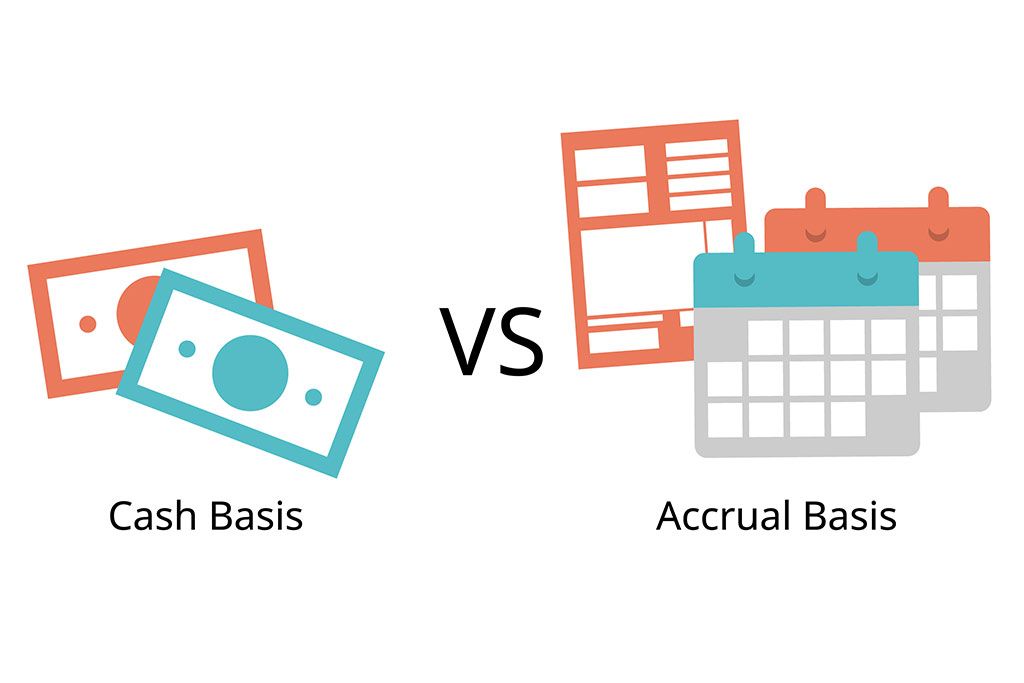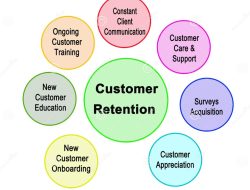How the Choice of Accounting Method Impacts Business Purchasing Decisions is a crucial topic for any business owner looking to optimize their financial strategies. The accounting method you select can profoundly affect not only your financial reporting but also your purchasing decisions, asset management, and overall business health. Understanding the nuances between methods like accrual and cash basis is essential in navigating the complexities of financial management.
From influencing your income statements to shaping stakeholder perceptions, the choice of accounting method is more than just a technical detail—it’s a strategic decision that can enhance or hinder your business growth. As we delve deeper, we will explore how these accounting choices directly impact capital expenditures, tax liabilities, and even your funding opportunities, making it a topic of vital importance for every entrepreneur.
Overview of Accounting Methods
Understanding accounting methods is crucial for businesses, as they directly affect financial reporting and decision-making processes. Accounting methods determine when revenue and expenses are recognized, which can significantly influence a company’s cash flow and tax obligations. The two primary accounting methods are accrual basis and cash basis accounting, each serving distinct purposes and audiences.Accrual basis accounting recognizes revenue and expenses when they are incurred, regardless of when cash transactions occur.
This method provides a more accurate financial picture of business performance over time. Alternatively, cash basis accounting records revenues and expenses only when cash is exchanged, making it simpler and more straightforward. The choice between these methods can shape a business’s financial strategy and its presentation to stakeholders.
Accrual Basis Accounting
Accrual basis accounting is often favored by larger businesses or those that maintain inventory, as it aligns with generally accepted accounting principles (GAAP). By recognizing economic events regardless of cash flow, this method allows companies to match revenues with the expenses incurred to generate them. This alignment offers a clearer view of profitability and financial health.Key features of accrual basis accounting include:
- Revenue is recorded when earned, not necessarily when received.
- Expenses are recorded when incurred, not when paid.
- Provides a comprehensive view of company performance, making it easier to assess financial standing.
A real-world example of accrual accounting can be seen in a manufacturing firm that completes a sale in December but receives payment in January. Under the accrual method, the revenue from the sale is recognized in December, reflecting the true earnings within that fiscal period.
Cash Basis Accounting
Cash basis accounting is simpler and often used by small businesses and sole proprietors due to its straightforward approach to tracking cash flow. This method provides a clear picture of how much cash is available, as it only records transactions when cash changes hands.Notable characteristics of cash basis accounting include:
- Revenue is recorded only when cash is received.
- Expenses are recorded only when cash is paid out.
- Simplifies tax preparation, as it aligns income with cash flow.
For example, a freelance graphic designer using cash basis accounting would report income only when clients pay their invoices, making it easier to track actual cash on hand.
Choosing the Appropriate Accounting Method
Selecting the right accounting method is vital for accurate financial reporting and business strategy. The choice impacts not just tax obligations but also how stakeholders perceive the company’s financial health.Considerations for selecting an accounting method include:
- Business size and complexity: Larger organizations often require accrual accounting for detailed insights.
- Regulatory requirements: Certain industries mandate specific accounting practices.
- Financial reporting needs: Stakeholders may prefer an accrual basis for its comprehensive nature.
“The right accounting method not only shapes financial reports but also drives business decisions and strategies.”
Choosing an appropriate accounting method can lead to better management decisions and enhanced stakeholder trust, making it essential for long-term success.
Impact on Financial Statements
The choice of accounting method significantly influences how a business’s financial health is presented to stakeholders. Different methods can yield contrasting figures on financial statements, which can, in turn, affect crucial business decisions, investor perceptions, and overall strategic direction.The accounting method selected can notably alter the income statement and balance sheet. For instance, using the cash basis method recognizes revenue only when cash is received, while the accrual basis method recognizes revenue when it is earned, regardless of cash flow.
This fundamental difference can lead to variations in reported profits, affecting financial ratios and company valuations.
Variations in Revenue Recognition, How the Choice of Accounting Method Impacts Business Purchasing Decisions
Understanding how various accounting methods impact revenue recognition is critical for stakeholders. Below is a table illustrating how different methods can influence the timing and reporting of revenue.
| Accounting Method | Revenue Recognition Timing | Example Scenario |
|---|---|---|
| Cash Basis | Revenue recognized when cash is received | A service is performed in January, but payment is received in February; revenue is recorded in February. |
| Accrual Basis | Revenue recognized when earned, regardless of cash receipt | A service is performed in January and billed in January; revenue is recorded in January, even if payment is received later. |
| Modified Cash Basis | Combination of cash and accrual; revenue recognized when cash is received or earned | A long-term contract where cash is received monthly, yet revenue is recognized monthly based on progress. |
The differences between these methods can lead to varying interpretations of a company’s profitability and financial position. For instance, a business may appear more profitable under the accrual basis due to the immediate recognition of earned revenues, while the cash basis might indicate lower profits during periods of heavy spending without immediate cash inflow.
“The choice of accounting method can dramatically influence financial statements, affecting business decisions and stakeholder trust.”
In summary, the selected accounting method plays a crucial role in shaping financial statements. Stakeholders must understand these implications to make informed decisions and assess the true financial health of a business effectively.
Purchasing Decisions and Asset Management

In the world of business, purchasing decisions and asset management are heavily influenced by the chosen accounting method. Different accounting practices can lead to varying perspectives on asset valuation, impacting both the decision-making process and the financial health of a company. Understanding these implications empowers businesses to align their purchasing strategies with financial goals.The choice of accounting method plays a crucial role in capital expenditures and asset purchases.
For instance, businesses utilizing the accrual basis of accounting may recognize expenses and revenues differently than those using cash basis accounting. This difference can affect how a company views its liquidity and overall financial position, influencing significant decisions regarding asset acquisition or upgrades. Additionally, the method chosen will impact depreciation and amortization schedules, which are vital for understanding the long-term cost implications of asset ownership.
Impact of Accounting Methods on Capital Expenditures
The accounting method selected can significantly affect how businesses approach capital expenditures, especially in terms of asset management. The following factors are essential considerations for businesses when making purchasing decisions based on their accounting methods:
- Cash Flow Management: Companies using cash basis accounting focus on immediate cash flow, which influences the timing and size of asset purchases.
- Tax Implications: Different methods can alter taxable income, thereby affecting cash available for investment in new assets.
- Asset Valuation: The chosen accounting method impacts how assets are valued on financial statements, influencing investment decisions.
- Financing Options: Capitalized expenditures may affect borrowing capacity, as lenders often assess financial health based on reported assets and liabilities.
- Depreciation Schedules: Methods like straight-line versus declining balance affect annual depreciation expense, impacting profit and loss statements.
“Understanding the implications of accounting methods on asset management allows businesses to make informed purchasing decisions that optimize financial outcomes.”
The effects of accounting methods on depreciation and amortization schedules further complicate purchasing decisions. A company might prefer an accounting method that allows for faster depreciation to reduce tax liability, thereby increasing cash flow for reinvestment. Conversely, slower depreciation methods may present a more favorable immediate view of profitability, impacting strategic decisions regarding future purchases.By navigating these complexities thoughtfully, businesses can ensure that their accounting methods align with their long-term goals, making purchasing decisions that enhance both operational capabilities and financial performance.
Tax Implications of Accounting Choices
The choice of accounting method is not just an operational decision; it also has significant tax implications that can influence a business’s bottom line. Selecting between cash and accrual accounting, for example, can lead to vastly different tax liabilities, affecting how and when income and expenses are recognized and reported. Understanding these implications is crucial for effective tax planning and can help businesses optimize their financial strategies.
The accounting method adopted by a business has direct consequences on its taxable income. For instance, businesses using the accrual method may report revenue and expenses sooner than those using the cash method, leading to earlier tax liabilities. This distinction can have profound impacts on cash flow management and tax payment schedules. Strategically choosing an accounting method can lead to tax savings, deferring tax obligations to future periods or even minimizing taxable income in high-revenue years.
Comparison of Tax Consequences by Accounting Method
It’s essential to understand how different accounting methods impact tax liabilities. Below is a comparison table outlining the primary tax consequences for businesses utilizing various accounting methods:
| Accounting Method | Revenue Recognition Timing | Expense Recognition Timing | Potential Tax Liability | Tax Planning Considerations |
|---|---|---|---|---|
| Cash Method | When cash is received | When cash is paid | Lower tax liability in low revenue years | Can defer income, optimize cash flow |
| Accrual Method | When earned, regardless of cash | When incurred, regardless of cash | Higher tax liability due to earlier income recognition | May require higher tax payments, careful revenue management |
| Hybrid Method | Combination of cash and accrual | Combination of cash and accrual | Variable, depending on revenue and expenses | Flexibility in tax planning, tailored to business needs |
Understanding these differences allows businesses to engage in effective tax planning strategies, such as timing purchases or choosing the appropriate accounting method to minimize tax burdens. A thorough analysis of how these accounting choices will affect future tax liabilities can empower businesses to make informed decisions that align with their financial goals and operational capabilities.
Stakeholder Perception and Funding Opportunities
The choice of accounting methods significantly influences the perceptions of stakeholders, including investors and creditors. These perceptions can directly impact a business’s ability to secure funding, as financial statements are often the primary basis for decision-making in the funding process. Understanding how various accounting methods present a company’s financial health is crucial for attracting investment and gaining lenders’ confidence.Different accounting methods can lead to varying interpretations of a business’s financial status.
For instance, using the cash basis of accounting can present a picture of higher liquidity and profitability in the short term, while the accrual basis may reflect a more conservative and potentially less favorable position. This difference can sway investors who are looking for immediate returns versus those who are interested in long-term growth. Lenders have their own criteria when assessing financial statements, and understanding how these methods affect their evaluations is vital for businesses seeking loans.
Influence of Accounting Methods on Investor and Creditor Perception
Stakeholders constantly analyze financial statements to assess a company’s viability. Different accounting methods can shape these perceptions in distinct ways. Below are key factors that influence stakeholder views:
- Transparency and Reliability: Accrual accounting often provides a more accurate depiction of financial health, leading stakeholders to perceive the business as more reliable.
- Profitability Indicators: Cash basis accounting can make profitability appear higher in the short term, attracting investors focused on immediate gains.
- Risk Assessment: Lenders may view companies using conservative accounting methods as lower-risk investments, fostering greater confidence in funding decisions.
- Comparative Analysis: Stakeholders often compare businesses within the same industry; different accounting practices can create discrepancies that influence investment choices.
A notable example of businesses adjusting accounting methods to secure funding involved a tech startup that switched from cash-based to accrual accounting. This shift improved their financial statements by accurately reflecting future revenue from long-term contracts, resulting in a successful funding round with venture capitalists who appreciated the transparency of earnings.When evaluating financial statements prepared under different accounting methods, lenders consider several factors:
- Debt Service Coverage Ratio: This ratio is essential for lenders, as it evaluates the availability of cash flow to cover debt obligations. Accrual accounting can provide a clearer picture of cash flows.
- Profit Margins: Lenders analyze profit margins under different accounting practices; high margins can enhance perceived creditworthiness.
- Consistency and Policy: Lenders appreciate consistency in accounting methods, as frequent changes can raise red flags regarding management practices.
- Historical Performance: Analyzing trends in financial performance across different accounting methods allows lenders to assess risk and growth potential.
In summary, the accounting methods chosen by a business can significantly influence stakeholder perceptions, shaping their willingness to invest or lend. By carefully selecting and managing accounting practices, businesses can enhance their appeal and secure the necessary funding to thrive.
Legal and Regulatory Considerations: How The Choice Of Accounting Method Impacts Business Purchasing Decisions
The choice of accounting methods is not merely a matter of preference; it is deeply intertwined with legal and regulatory obligations that demand strict adherence. Businesses must navigate a complex landscape of laws, regulations, and standards that dictate which methods can be used and how they must be applied. Understanding these requirements is vital for ensuring compliance and avoiding severe consequences.Legal requirements surrounding accounting methods stem primarily from frameworks such as Generally Accepted Accounting Principles (GAAP) and International Financial Reporting Standards (IFRS).
These standards Artikel acceptable practices that businesses must follow to ensure transparency and consistency in financial reporting. Compliance with these regulations is not optional; it is mandated by law, and failing to adhere can lead to significant repercussions.
Compliance Issues Due to Improper Accounting Method Application
Improper application of accounting methods can lead to various compliance issues, often resulting in severe penalties. Businesses may face audits from regulatory bodies if inconsistencies in financial reporting are discovered. These audits can uncover misstatements that undermine stakeholder trust and can lead to reputational damage.For example, a company that uses accelerated depreciation without proper justification may misrepresent its asset values and liabilities.
Such misrepresentation could trigger investigations by the Securities and Exchange Commission (SEC) or other regulatory authorities. In 2001, Enron faced bankruptcy partly due to misleading financial statements, which involved the inappropriate use of accounting methods, showcasing the importance of compliance.The potential penalties for misrepresentation in financial reporting can be severe and multifaceted. Businesses may incur hefty fines, and individuals involved may face criminal charges, leading to imprisonment.
Regulatory bodies impose penalties to deter misconduct and ensure that all businesses operate within established legal frameworks.
- Financial restitution: Companies may be required to pay back misrepresented profits.
- Administrative penalties: These can include fines up to millions of dollars based on the severity of the violation.
- Criminal charges: Executives and board members may face jail time if found guilty of fraudulent practices.
- Loss of licenses: Regulatory authorities may revoke business licenses, halting operations.
“Compliance with legal and regulatory accounting standards is pivotal to maintaining integrity in financial reporting, safeguarding against legal repercussions.”
Industry-Specific Accounting Practices
In the diverse landscape of business, the choice of accounting methods can significantly vary across different industries. This variance is primarily influenced by the unique operational needs, regulatory requirements, and financial reporting standards inherent to each sector. Understanding these distinctions is crucial for businesses aiming to optimize their purchasing decisions and financial strategies.Different industries have specific accounting practices that best suit their operational frameworks and compliance needs.
For instance, businesses in the manufacturing sector may prefer absorption costing to capture the full cost of production, while service-oriented firms often utilize cash accounting for its simplicity and immediacy. Recognizing these variances can help stakeholders make informed decisions regarding asset management, financial reporting, and strategic purchasing.
Preferred Accounting Methods by Industry
A range of industries adopt distinct accounting methods that align with their operational goals and regulatory environments. Below are examples of industries and their corresponding preferred accounting methods:
| Industry | Preferred Accounting Method |
|---|---|
| Manufacturing | Absorption Costing |
| Retail | FIFO (First-In, First-Out) |
| Construction | Percentage of Completion |
| Healthcare | Accrual Accounting |
| Non-Profit | Cash Basis Accounting |
| Technology | Project-Based Accounting |
The adoption of these methods is not arbitrary; each industry has its rationale based on the nature of its operations. For example, the manufacturing sector benefits from absorption costing as it allocates all production costs to products, giving a clearer picture of profitability. In contrast, the retail sector often relies on FIFO because it aligns inventory costs with the actual flow of goods, supporting better cash flow management.
“Industry-specific accounting methods enhance decision-making by providing tailored insights into financial performance and resource allocation.”
Each accounting method provides a framework that can either enhance or hinder a company’s ability to make strategic purchasing decisions. As such, understanding these practices is vital for businesses looking to navigate their financial landscapes effectively.















